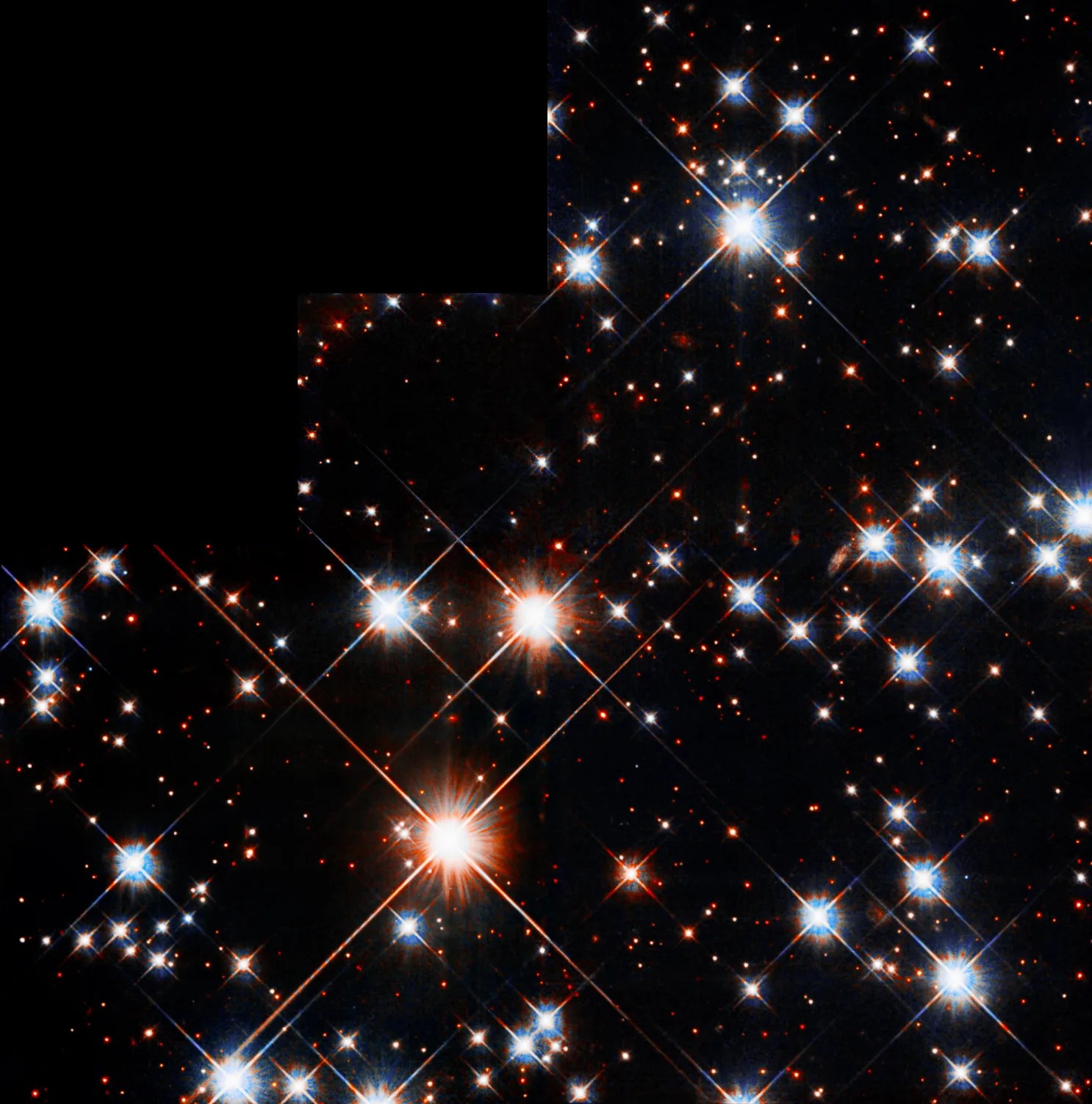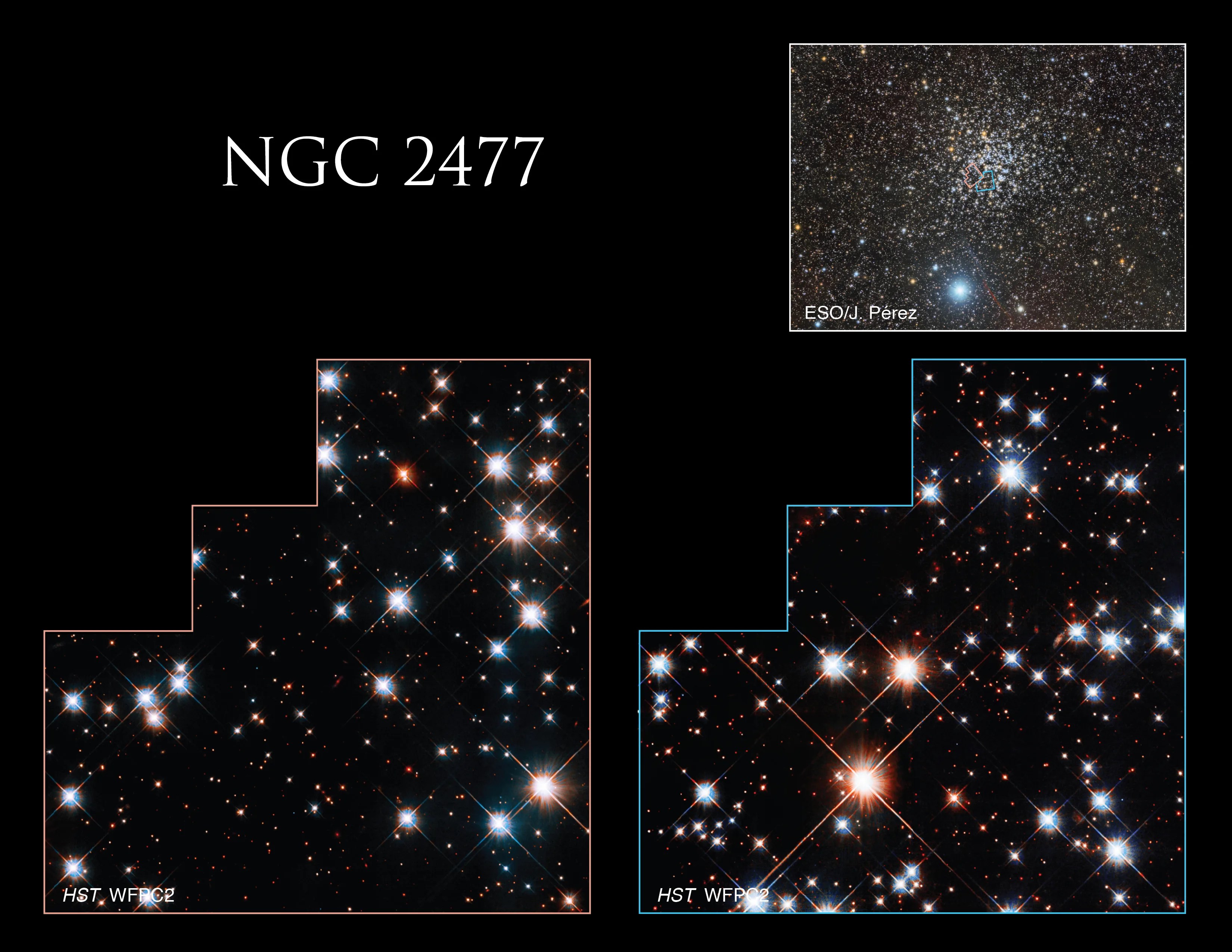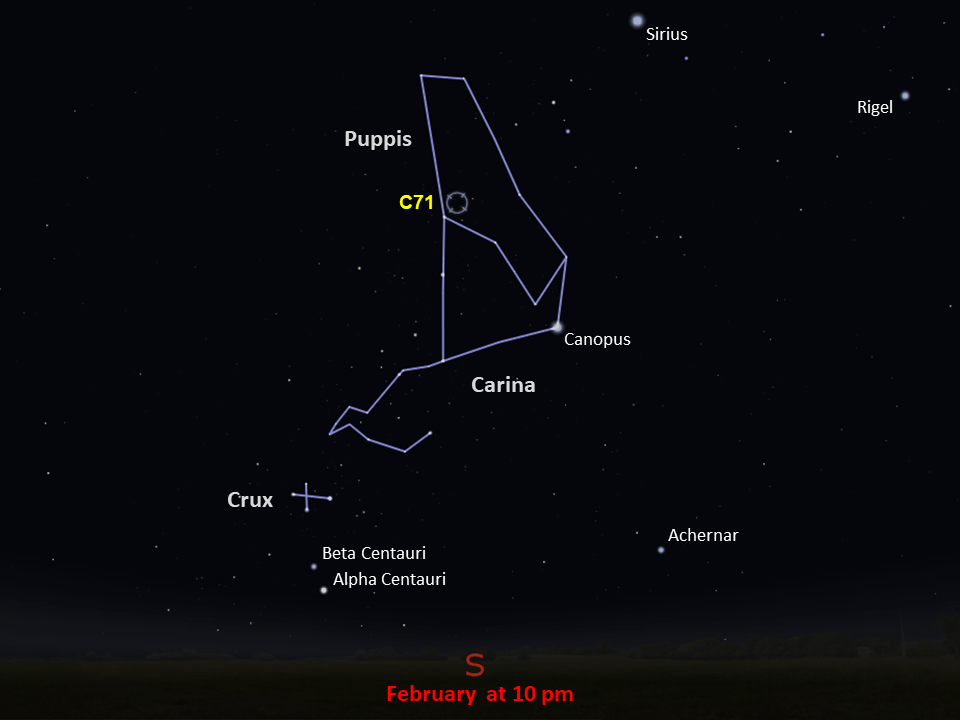Caldwell 71
Backyard observers can find this group of stars by using the bright stars Sirius and Canopus as guides.
Distance
4,000 light-years
Apparent Magnitude
5.8
constellation
Puppis
object type
Open Cluster

Caldwell 71, or NGC 2477, is an open star cluster. Open clusters are loosely bound collections of stars. However, Caldwell 71 is relatively compact and strikingly spherical, so it is easily mistaken for a globular cluster. It is located roughly 4,000 light-years from Earth in the constellation Puppis. With an apparent magnitude of 5.8, it appears fairly bright in the sky and can be spotted easily with a pair of binoculars. The loose open cluster NGC 2451 appears near it, and both clusters can fit in the same field of view with binoculars or a low-power telescope. Discovered by the French astronomer Nicolas-Louis de Lacaille in 1751, Caldwell 71 is best observed in the Southern Hemisphere during the summer and in the lower latitudes of the Northern Hemisphere during the winter.

This image, showing just a portion of Caldwell 71, is a composite of visible and infrared observations by Hubble’s Wide Field and Planetary Camera 2. The observations were made to study the evolution of cooling white dwarfs (the dense cores left behind after a star has exhausted all of its nuclear fuel) and to investigate the cluster’s Initial Mass Function (IMF) — a tool astronomers use to describe how mass is initially distributed within a population of stars. Using Hubble’s observations, astronomers found that the IMF for Caldwell 71 was the same as the other star clusters they studied.

Glossary
Apparent Magnitude - The brightness of an astronomical object as seen from Earth, influenced by the object's distance from Earth, its absolute magnitude, and even gas and dust that lie between the object and Earth.
Globular Cluster - A spherical group of stars that are gravitationally bound to each other, with most of the stars concentrated at the cluster’s center.
Open Cluster - A group of stars loosely bound by gravity, destined to be short lived because the gravitational interactions between members are weak enough that stars can be drawn away from the cluster by stronger gravitational forces.
White Dwarf - The core of a dead Sun-like star whose outer layers have been expelled into space.
Explore Hubble's Caldwell Catalog
The following pages contain some of Hubble’s best images of Caldwell objects.

Caldwell 1
Also known as NGC 188, this group of stars formed from a large cloud of gas making the stars roughly…

Caldwell 2
This shell of gas is expanding outward, away from the dying star within.

Caldwell 3
This barred spiral galaxy was first spotted by British astronomer William Herschel in April 1793 in the constellation Draco.




